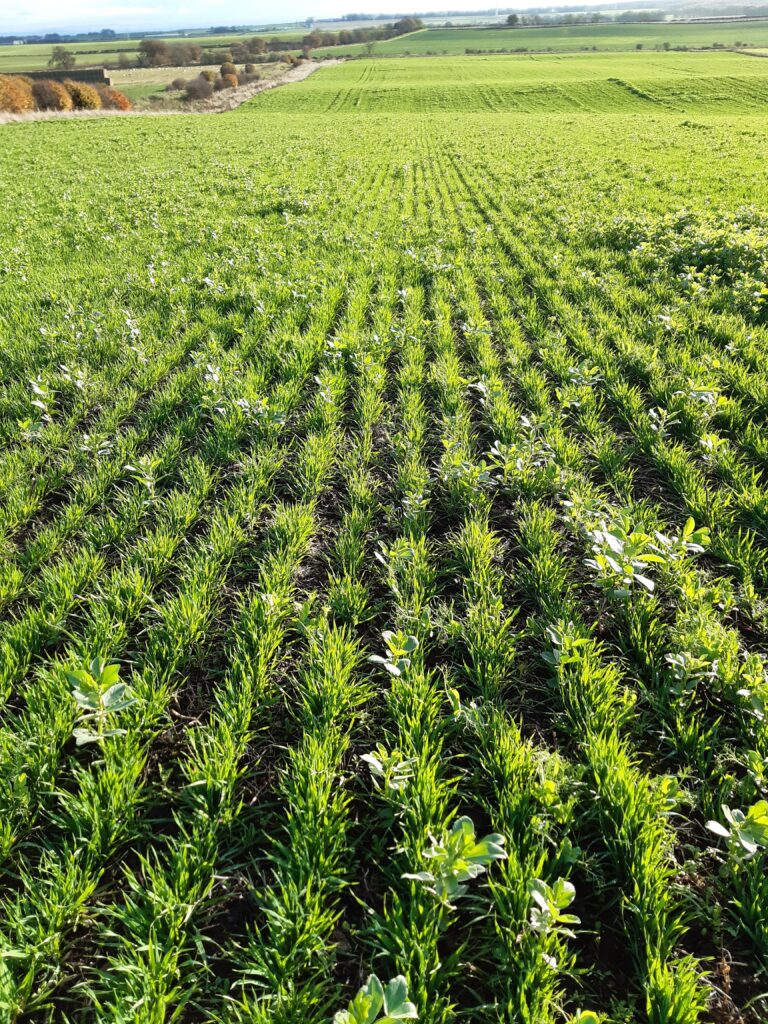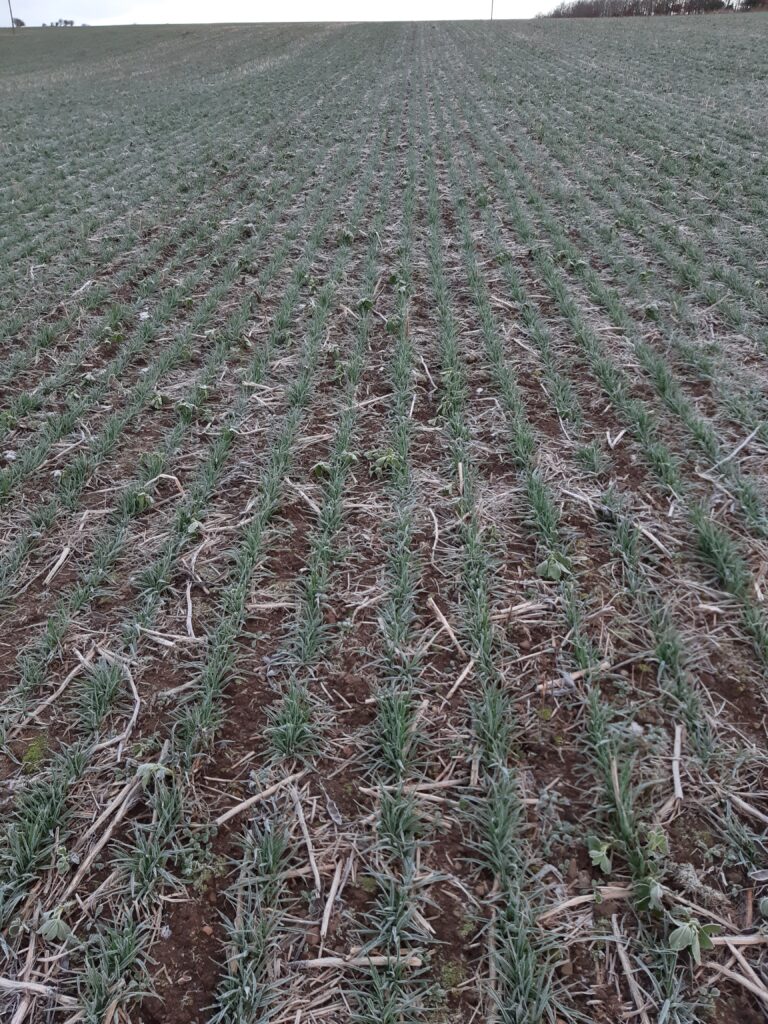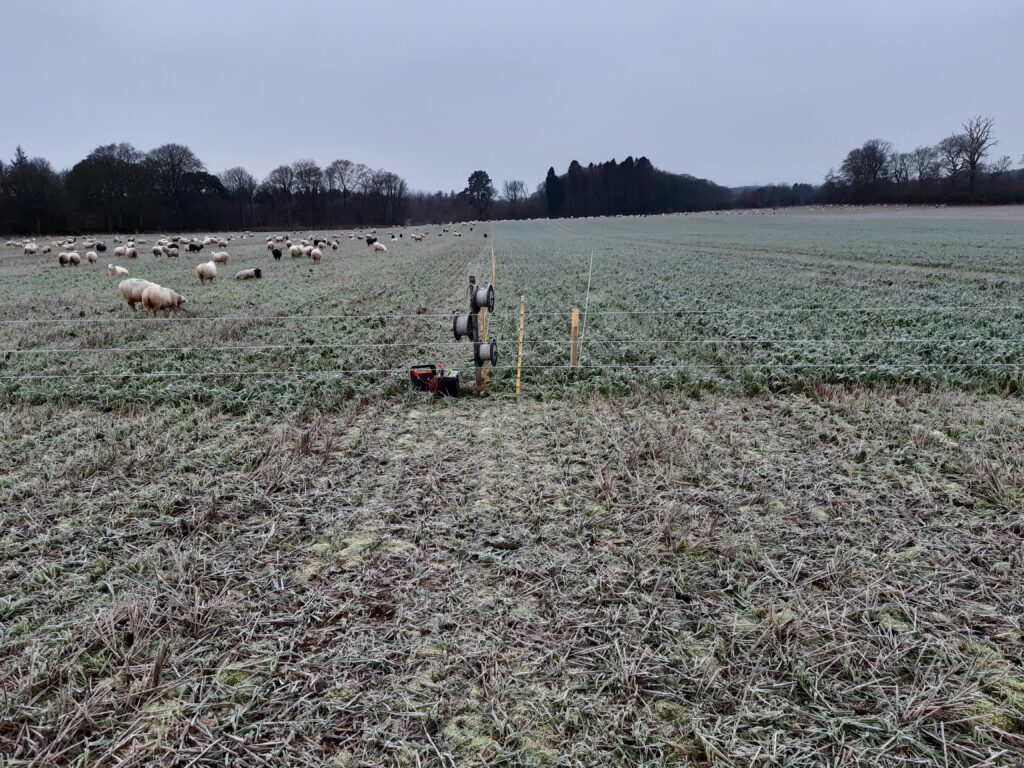Dec 2023
So it’s back down to earth with a bump this year. We have had a run of favourable summers that have helped us succeed with our direct drilling and progress with cover cropping across the farm. Essentially the harvests have been earlier and drier, allowing timely straw baling and cover crop establishment. However, we were back to our more usual harvest timings for 2023, this is more like the conditions we faced when we first ventured down the no-till route. Variable would be the best description of the outcomes then.
We have learnt a lot over the years and, with more appropriate technology and experience, we seem to have upped our game. I think our soil structure has improved to the extent that we can sow sooner after any wet weather, successfully. That said, 12 months ago we were looking at plenty of early sown winter cereals and cover crops with huge canopies being eaten by our newly resident sheep flock. This year we have very little early sown cereals, and the cover crops are not quite as large. Despite this we are still seeing big benefits. During the particularly wet October (I must confess we got off relatively lightly, compared to others further north, with only 250mm for the month). Yes, we did have plenty water running out of gateways, but the vast majority of this was running clear, still the odd bit after potatoes that left a lot to be desired, to remind us of what we are missing by not cultivating the whole place.
I briefly mentioned our livestock partners, Sheepleep, a livestock business run by Alex Johnston and Rosie Hetherington, a few months back. The deal is that we pay them an annual fee to manage our cattle and grazing in line with our requirements. The benefit to us is a dedicated livestock team and year round access to sheep, but more important is their mindset regarding mob grazing and building a ‘cheap to operate’ cattle enterprise. An example being that we now mostly walk the cattle around the farm instead of using a trailer and tractor. This has saved a lot of time and money in just 16 months. We even cross the dual carriageway with the much appreciated help from the police who close the road for us for a few minutes. It takes about 2 minutes for 150 cows and calves to cross, instead of a whole day to move them by trailer.

Sheepleep get access to 1200ha to graze and develop their sheep flock in return for a grazing fee. They benefit by having a portion of their income known for the year and having continuous access to a large block of land for their business to operate from. The opportunities for young people to build a business from nothing within agriculture seem to be slim, mostly related to land access issues and plenty established farmers willing to pay more to access what little does come available.
So currently we have 1100 ewes being tupped as they move rapidly across the cover crops in 2 separate mobs. The aim is to keep the ewes on as high a plain of nutrition as possible for the 19 days the tups are working. They are leaving about a third of the cover crop uneaten. Forcing the ewes to clean up more might reduce the lambing percentage, a risk not worth taking. The ewes will most likely go back over these crops later in the winter to clean up when they can be made to work harder for their feed. Benefits from an arable perspective include the retention of a living root system in the soil for a few more weeks of the year, as well as leaving some extra ground cover for a bit longer, after all we have most of the winter to come yet and with that, plenty precipitation I suspect.
We experimented with some hairy vetch in a few cover crops last winter. I was not convinced that this would survive the winter frosts. I need not have worried. We have added more into some covers this winter to aid diversity for both the soil and the grazing stock. Some of these crops will be cut for silage in May ahead of the kale crop establishment in the same fields. I am hoping the vetch will add something extra to the silage too.

In the constant drive to increase diversity, it was decided we would graze sheep and cattle together this summer. The cows had other ideas. The grass was quite long when this started. The first problem was having to strim grass to get the 3 electric wires set up for the sheep. Then we discovered that the cows pay no attention to the orange electric wire, they are used to a white one, and proceeded to walk right through it. We ended up with sheep and cows all over the field along with the wire that was supposed to contain them. The experiment was given up after a couple days, back to the drawing board for this. Could technology help here with electric collars? Maybe, if they ever become cheap enough.
Despite the very wet October, the cattle made very little mess as they moved round the grazing platform. We had built up large covers that were able to carry the cows and hold them out of the soil on all but the wettest of days. Only a few of the paddocks were left looking a little dirty – they represent only a very small part of the grazing platform and will recover. Perhaps we will have to rest them longer through the spring next year for this. This is just one of the many benefits we are seeing as we adapt the rest periods of the grass to the growth rate. The longer rest period from July onwards allows a thatch to be built up, whilst still producing plenty grazing for the cows. I dread to think what the grazing fields would have looked like if we were still set stocking.
The cows moved onto the kale in November with calves still at foot. This is a little earlier than we would like. This decision was made to allow all the kale to be eaten up in good time giving us the option of timely establishment of the following spring cereals. Last spring, we held stock on the kale longer than ideal to eat it all up. This was to the considerable detriment to the spring oats that followed. We were too greedy with the cows. This is just one of the compromises we currently face in our system. Keeping livestock cheaply whilst not out staying their welcome on the arable part of the rotation. ‘Grow less kale’ some would say, and were I braver, I would agree. I feel anything gained over a year or two might well be wiped out several times over when we do get a winter where we need plenty extra feed. When this occurs, usually everyone is short, so buying in could prove costly in an emergency.

Calves will not be weaned until mid-February. The cows will do the heavy lifting, greatly reducing the challenges on the outwintered calves. By weaning time, the days are longer, and the sun is starting to feel warm again. The stress from weaning shouldn’t be so great as the calves are a lot older than many wean. Calving is due to start on 10th April, and, for the first time will be outside, by design. We had better enjoy the quieter winter months now. With spring work hopefully getting going in February, calving, lambing, and turning fattening stock back onto grass in April, we will need to have our wits about us. February is less than 9 weeks away!
I was lucky enough to join the BASE UK trip to France in November. We spent 3 days visiting farms within a 3hr radius of Paris by car. A lot was learned, the knowledge they have of cover crop and extracting the most from them is huge. I can highly recommend this trip to all, as well as BASE UK membership, should the opportunity come around again. The knowledge transfer ability of peer-to-peer learning is huge. It was good to see livestock being seen as part of the cover crop recycling task over there too.


